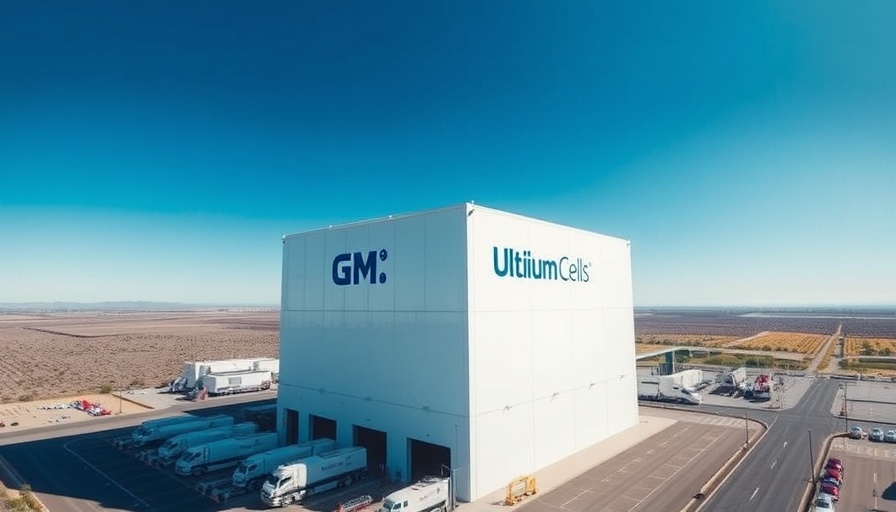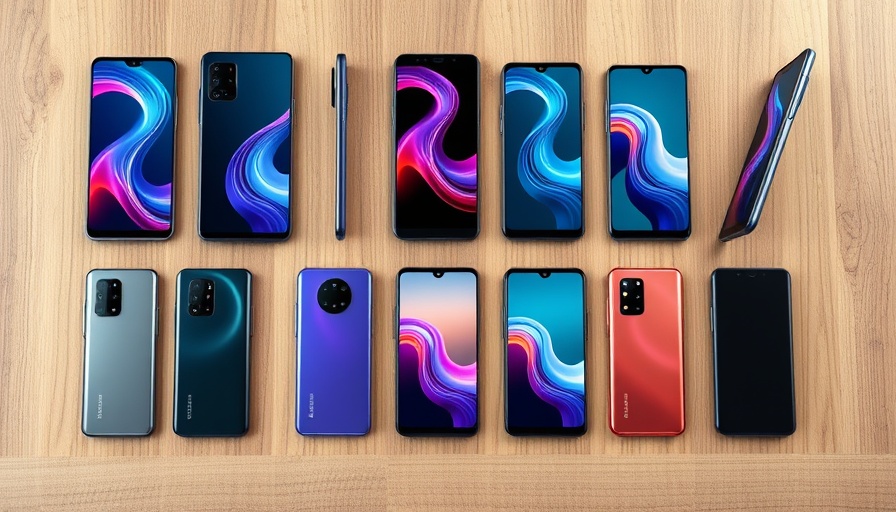
How GM's Battery Strategy Mirrors China's Approach
General Motors (GM) is doubling down on an innovative strategy involving the production of lithium iron phosphate (LFP) battery cells, essential for powering its upcoming electric vehicle (EV) models. This marks a pivotal shift from its previous production strategy, which favored a singular battery cell type for all its vehicles. With ambitions of achieving a leading position in the EV market, GM's decision to adopt the LFP battery technology echoes China's successful route towards affordable electric vehicles. As GM gears up to build LFP cells at the Spring Hill plant in Tennessee commencing in late 2027, it demonstrates a commitment to not only ramp up production but also to drive costs down, ensuring accessibility of EVs across a broader demographic.
Revolutionizing Cost Structures in EVs
The essence of GM's strategy is to offer lower-cost vehicles to compete effectively in the burgeoning EV market. By utilizing LFP battery technology, GM can produce affordable vehicles that cater to the mass market, similar to strategies employed by several Chinese manufacturers. The LFP cells, which are expected to lower overall vehicle costs while maintaining adequate performance for consumers, will especially benefit models like the updated Chevrolet Bolt EV set to launch later this year. This approach is poised to accelerate the presence of affordable EVs on U.S. roads significantly ahead of GM's other battery innovation, lithium manganese-rich (LMR) technology, which, although presenting superior energy density, will not be available until 2028.
The Challenge of Supply and Production Delays
As GM navigates its battery production strategy, it must also deal with the logistical challenges that come with overhauling an existing production plant to accommodate LFP battery cells. The costs associated with such a transition are not currently specified, creating an air of uncertainty around GM's timeline and output capabilities. Furthermore, the reliance on importing LFP cells from another LG plant in South Korea during the initial phase underscores potential bottlenecks in production that could affect the supply chain for the Chevrolet Bolt EV. Thus, while strides are being made toward achieving lower-cost alternatives, traditional challenges within the supply chain remain a pressing concern for the company.
The Future of GM's Battery Offering: LMR Chemistry Insights
Looking ahead, GM is gearing up to introduce its LMR battery technology, promising a significant jump in energy density over its LFP counterparts. Marketed as a game-changer for larger vehicles like SUVs and trucks, the LMR technology is designed to hold one-third more energy within the same volume of batteries while maintaining comparable costs. This significant boost in energy capacity could place GM in a favorable position against competitors struggling with the high costs associated with nickel and cobalt used in traditional battery technologies. As consumers increasingly seek larger, high-performing EVs, the successful deployment of LMR batteries could indeed redefine market expectations.
Exploring Sustainability and Environmental Impacts
In an era increasingly defined by the need for sustainability, GM’s pivot towards LFP batteries can be seen as a more environmentally feasible option. LFP cells, while perhaps not matching the performance metrics of more complex chemistries like nickel-manganese-cobalt, offer a less resource-intensive solution. They are less dependent on elusive minerals, making them not only cheaper but also a more sustainable choice in the face of global resource shortages.
The Broader Implications for the Auto Industry
GM's battery strategy does not exist in a vacuum—it is indicative of a wider trend within the automotive industry where manufacturers are racing to establish suitable entries in the EV sector. As companies globally ramp up electric vehicle production, many are closely observing GM's maneuvers to understand its impact and implications for their strategies. With cost-effective technology becoming the central pillar of success, we may see a wave of competitors similarly transitioning towards LFP battery technologies in order to remain viable within their markets. GM's strategy not only opens doors for greater EV accessibility but also invites a broader discussion on innovation and sustainability within the automotive landscape.
What Does This Mean for Consumers and the Future?
For consumers, GM’s ability to deliver affordable electric vehicles armed with LFP technology could mean a very different marketplace; one gleaming with options that are financially attainable and environmentally friendly. Moreover, as production ramps up and technologies evolve, we are likely to witness a significant shift in the public's perception of electric vehicles. The simplification of battery production and the focus on cost containment can lead to wider adoption, enhancing the EV landscape and potentially resulting in lower carbon emissions.
Final Thoughts and Actionable Insights
As the industry evolves and GM leads the charge with its latest initiatives, it's essential for consumers and potential investors to stay informed about developments in EV technologies and battery innovations. Understanding the nuances and advancements in this space can empower consumers to make informed choices. Furthermore, as companies strive to innovate and bring new gadgets to the market, awareness of the environmental and economic implications of these technologies will shape how we engage with the future of transportation. Therefore, staying updated with the latest technology trends is crucial for anyone invested in the automotive sphere or simply looking to drive sustainable change.
 Add Row
Add Row  Add
Add 




 Add Row
Add Row  Add
Add 

Write A Comment